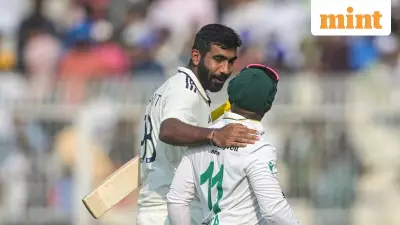
The Vacant Fortress: India's Search for Number 3
For more than twenty years, India's number three batting position stood as an impregnable fortress, first guarded by the legendary Rahul Dravid and then by the resilient Cheteshwar Pujara. This crucial spot in the Test lineup remained consistently occupied from November 1996 until June 2023, creating a sense of stability that became taken for granted.
The selectors' decision to move on from Pujara after the 2023 World Test Championship final has triggered an unexpected crisis. What was once Indian cricket's most secure position has transformed into a revolving door, with as many as seven different batters tried at one-drop in the past two years, yet none managing to claim the spot as their own.
The Seven Contenders: Who's Tried and Failed?
Shubman Gill emerged as the first candidate when he was demoted from his regular opening position following the 2023 WTC final defeat. The current Test captain batted 16 times at number three, accumulating 972 runs at an average of 37.38 with three centuries and three fifties. His best score of 119 not out showed promise, but following Virat Kohli's Test retirement in May, he was moved down to number four.
In a surprising move during his final home series before retirement, Virat Kohli batted at number three once against New Zealand at Bengaluru in 2024. The batting maestro, who had carved his legacy at number four, scored 0 and 70 in that solitary appearance.
Devdutt Padikkal got his opportunity when Rohit Sharma was unavailable for the first Test against Australia at Perth in November last year. With KL Rahul pushed up to open, Padikkal was slotted at number three but managed scores of 0 and 25 in his two innings.
When Sharma returned to lead India from the second Test against Australia at Adelaide, KL Rahul found himself pushed down to number three for the fourth Test at Melbourne. His returns of 24 and 0 did little to cement his claim to the position.
Sai Sudharsan made his India debut on the England tour in July and batted in five Tests at number three, scoring 273 runs at an average of 30.33 with two fifties. The left-hander showed glimpses of his talent with a best score of 87 but was eventually dropped from India's playing XI for the Kolkata Test against South Africa.
After Sudharsan struggled in his debut against England at Leeds, Karun Nair was promoted to bat at number three in the second Test at Edgbaston. The batter returned with scores of 31 and 26, earning a second chance in the following match at Lord's where he made 40 and 14. This marked the end of his experiment as Sudharsan was recalled for the Old Trafford Test.
The latest contender, Washington Sundar, was tried at number three in the first Test against South Africa at Kolkata. The southpaw managed scores of 29 and 31 on a difficult batting surface, leaving the position still up for grabs.
The Global Perspective: How Other Teams Fare
India's struggle with the number three position stands in stark contrast to other cricket nations, particularly Australia. Australia has demonstrated remarkable stability at number three with Marnus Labuschagne batting in 19 out of the 24 Tests they've played in the last two years.
England's situation mirrors India's challenges, having tried as many as nine batters at number three in Tests during the WTC cycle post-2023. Ollie Pope has played the most matches at 20, followed by Jacob Bethell and Moeen Ali with three matches each.
South Africa have tested five batters at number three in the same period, with Wiaan Mulder occupying the position most frequently with seven matches. New Zealand have tried four batters, with Kane Williamson batting 11 times in that spot, showing relative stability compared to India's musical chairs approach.
The Current Conundrum: What Next for India?
With Shubman Gill ruled out of the second Test against South Africa in Guwahati, the team management faces a critical decision regarding their top-order configuration. The situation presents multiple options: recalling Sai Sudharsan at number four while maintaining the current combination, returning him to number three with Sundar moving down, or giving Devdutt Padikkal another opportunity at the problematic position.
The number three position in Test cricket demands technical proficiency, mental fortitude, and the ability to adapt to different match situations. As India continues its search for a permanent solution, the contrast with Australia's settled lineup serves as a reminder of the value of stability in the crucial one-drop position.
The ongoing experimentation reflects both the depth of Indian batting talent and the challenge of finding a player with the right temperament for one of Test cricket's most demanding roles. As the team prepares for future challenges, solving the number three puzzle remains one of Indian cricket's most pressing concerns.





